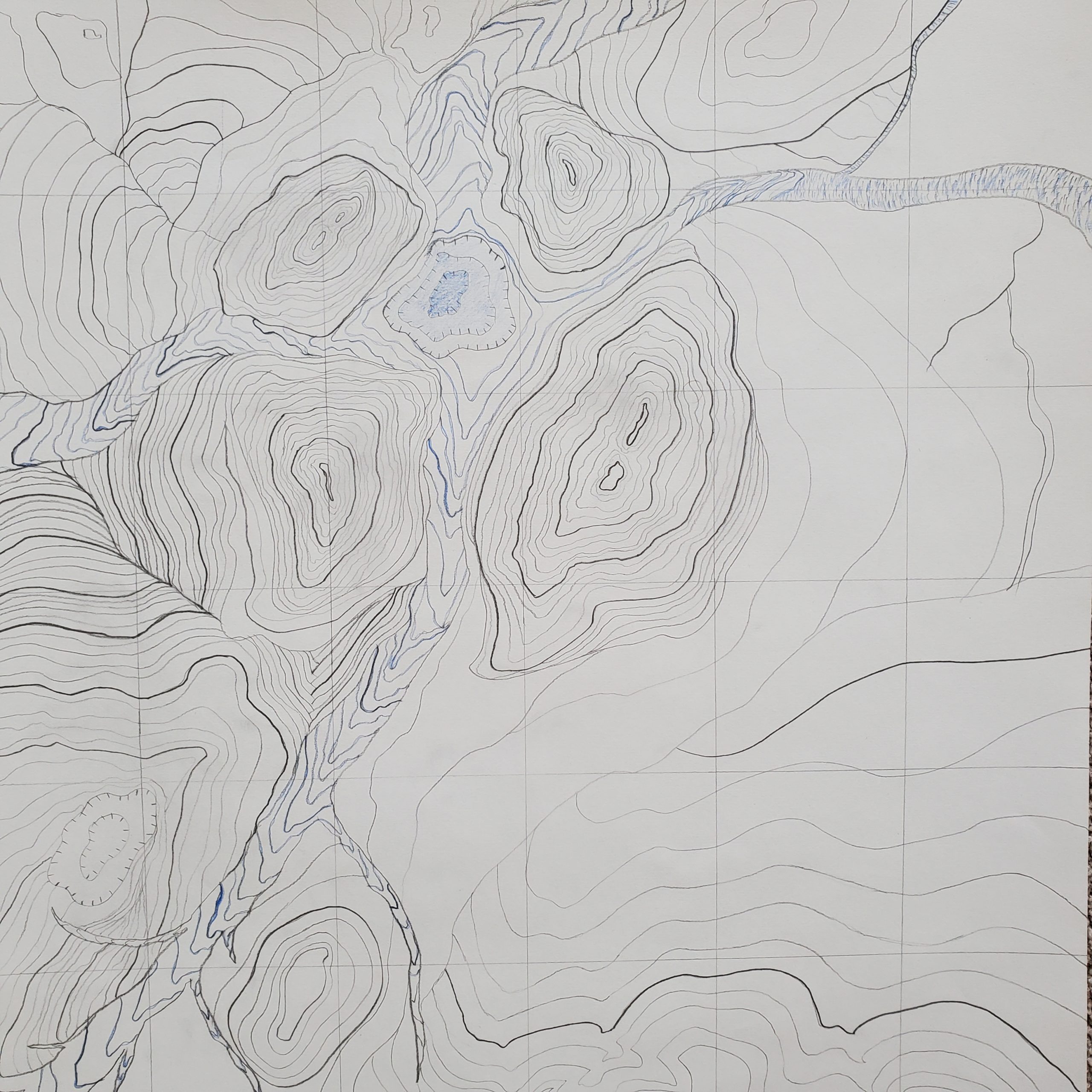Snake venom is made up of many different substances and toxins – one of which is called a snake venom metalloprotease or SVMP. These proteases inhibit or stimulate certain clotting factors in our bloodstream to produce various effects. They are fascinating because certain types can clot blood excessively, and others can cause hemorrhaging. My topographical map depicts a river branching out with lots of small streams splitting off it to represent the degradation of the basement membrane in a blood vessel, and my small river on the top right corner has a glacier blocking the flow of it, which represents the venom stimulating certain clotting factors such as prothrombin which would block the flow of blood and be fatal.



Erin dives into the complex system of clotting factors within our blood, and the pathways snake venom can take to disrupt the coagulation cascade- a positive feedback loop of activating clot factors.The failure of this “soft plug” of platelets and fibrin strands would lead to loss of blood. The failure to deactivate the positive loop of the coagulation cascade would lead to clots in the system. Metalloproteinase (SVMP) in snake venom acts to enable either one of these two acts. It can competitively bind to membrane components like collagen, and disrupt platelet bonds and eventually break down the wall and wall plug for blood to excessively flow through. SVMP can also stimulate clotting factors and enable the continuation of the cascade until clots develop. Erin’s drawing depicts these two potentially fatal causes as a free-flowing river and a river about to be blocked by a moving glacier. As she said, blood is used to transport the important things our bodies need to function: oxygen, minerals, nutrients, wastes, etc. Her project encaptures our body’s theme of homeostasis, of balance, and what happens when this balance is shifted too much in either direction.